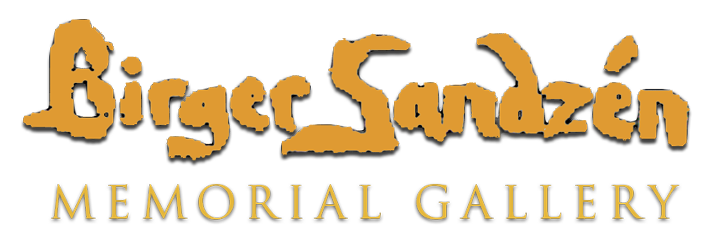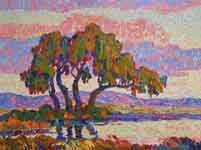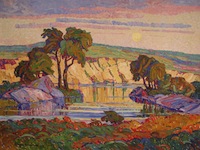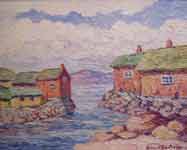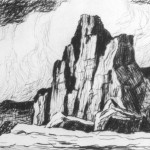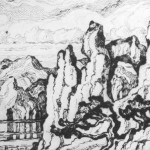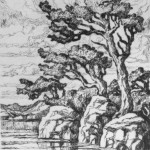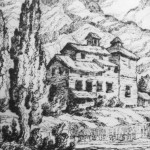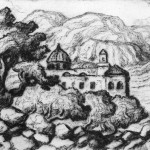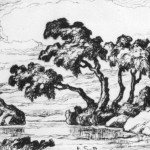Birger Sandzén used drypoint techniques on copper and zinc plates only 27 times. Drypoint is a printmaking process in which the plate is inscribed directly with a pointed needle of steel. The incising process leaves a nearly imperceptibly ragged edge, or burr, which when printed produces the softness of line that is a distinguishing characteristic of the drypoint. Once the plate has been inscribed, ink is rubbed on the surface of the plate – the excess is then wiped away. Ink remains in the incised areas and burrs. Paper is laid on the plate and both are run through a press under extreme pressure.
In most cases, Sandzén sent his plates to Chicago for printing since he did not own an etching press.
- Rocks and Clouds, 1918, drypoint, second state.
- The Arch, 1928, drypoint.
- Summer Clouds, 1928, drypoint.
- The Old Mill, 1929, drypoint.
- In Taxco, 1935, drypoint.
- Hillside Pond, 1938, drypoint.
